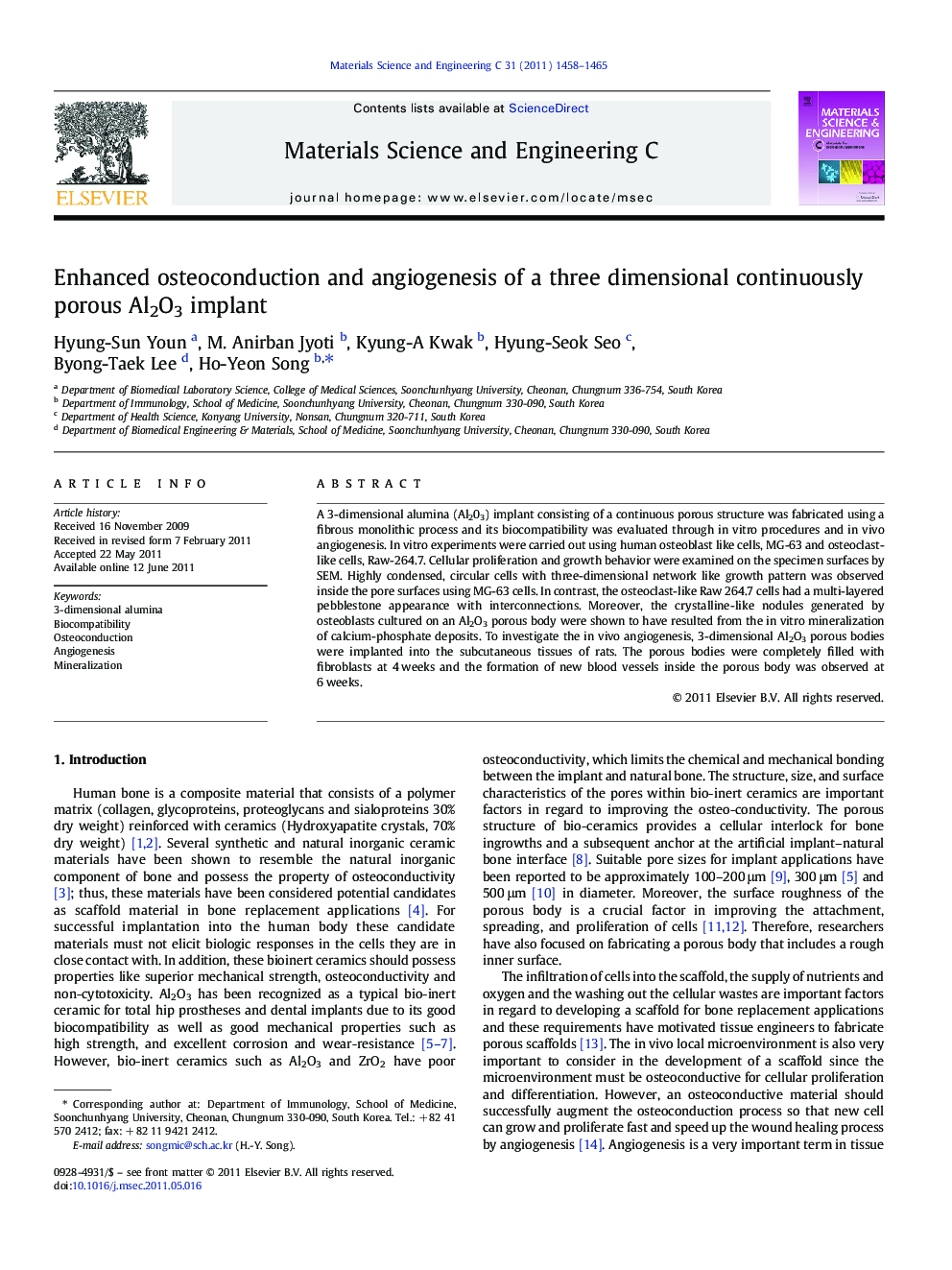| Article ID | Journal | Published Year | Pages | File Type |
|---|---|---|---|---|
| 1429733 | Materials Science and Engineering: C | 2011 | 8 Pages |
A 3-dimensional alumina (Al203) implant consisting of a continuous porous structure was fabricated using a fibrous monolithic process and its biocompatibility was evaluated through in vitro procedures and in vivo angiogenesis. In vitro experiments were carried out using human osteoblast like cells, MG-63 and osteoclast-like cells, Raw-264.7. Cellular proliferation and growth behavior were examined on the specimen surfaces by SEM. Highly condensed, circular cells with three-dimensional network like growth pattern was observed inside the pore surfaces using MG-63 cells. In contrast, the osteoclast-like Raw 264.7 cells had a multi-layered pebblestone appearance with interconnections. Moreover, the crystalline-like nodules generated by osteoblasts cultured on an Al2O3 porous body were shown to have resulted from the in vitro mineralization of calcium-phosphate deposits. To investigate the in vivo angiogenesis, 3-dimensional Al2O3 porous bodies were implanted into the subcutaneous tissues of rats. The porous bodies were completely filled with fibroblasts at 4 weeks and the formation of new blood vessels inside the porous body was observed at 6 weeks.
Research Highlights► A new 3D porous alumina implant was fabricated and its biocompatibility was assayed. ► Both osteoblast, MG-63 and osteoclast, Raw-264.7 cells were used for in vitro studies. ► Both cells attached on the surfaces and proliferated on the material very well. ► The porous material was also implanted in the subcutaneous tissues of the rats. ► Development of fibrous tissues and blood vessels was evident after 4 and 6 weeks.
